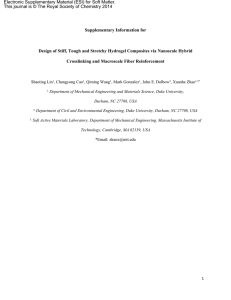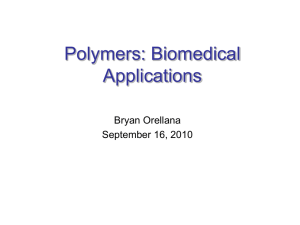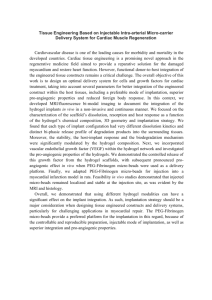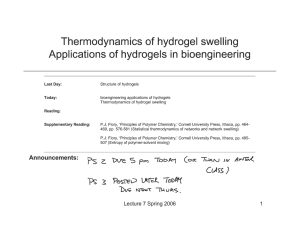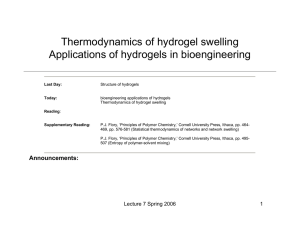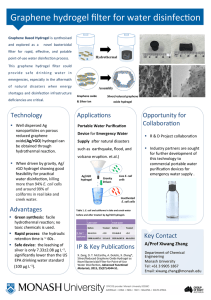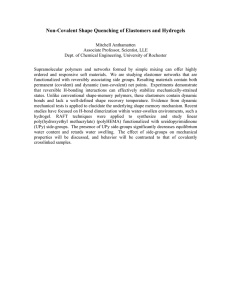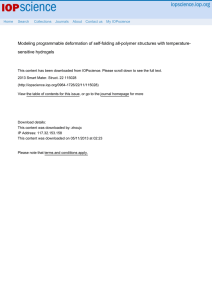Nappy Powder Experiment Safety and First Aid
advertisement
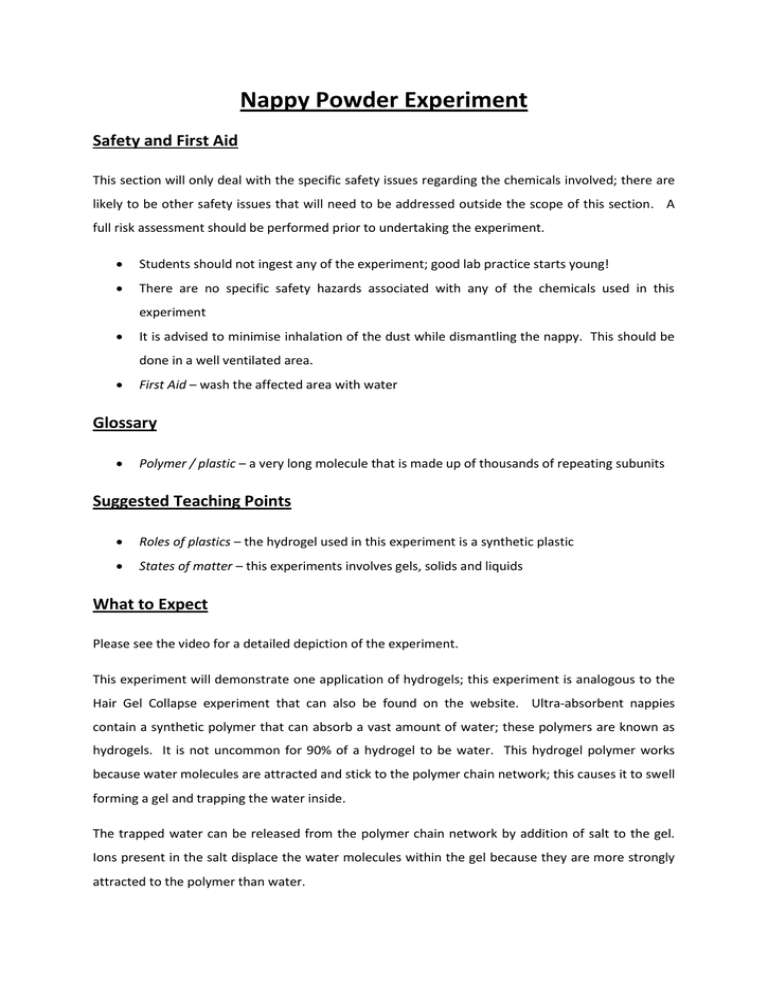
Nappy Powder Experiment Safety and First Aid This section will only deal with the specific safety issues regarding the chemicals involved; there are likely to be other safety issues that will need to be addressed outside the scope of this section. A full risk assessment should be performed prior to undertaking the experiment. Students should not ingest any of the experiment; good lab practice starts young! There are no specific safety hazards associated with any of the chemicals used in this experiment It is advised to minimise inhalation of the dust while dismantling the nappy. This should be done in a well ventilated area. First Aid – wash the affected area with water Glossary Polymer / plastic – a very long molecule that is made up of thousands of repeating subunits Suggested Teaching Points Roles of plastics – the hydrogel used in this experiment is a synthetic plastic States of matter – this experiments involves gels, solids and liquids What to Expect Please see the video for a detailed depiction of the experiment. This experiment will demonstrate one application of hydrogels; this experiment is analogous to the Hair Gel Collapse experiment that can also be found on the website. Ultra-absorbent nappies contain a synthetic polymer that can absorb a vast amount of water; these polymers are known as hydrogels. It is not uncommon for 90% of a hydrogel to be water. This hydrogel polymer works because water molecules are attracted and stick to the polymer chain network; this causes it to swell forming a gel and trapping the water inside. The trapped water can be released from the polymer chain network by addition of salt to the gel. Ions present in the salt displace the water molecules within the gel because they are more strongly attracted to the polymer than water. Equipment and Chemicals An ultra-absorbent nappy; any brand will work but will provide different amounts of hydrogels Water; distilled or deionised water works much better than tap water. However, tap water can be used (we used tap water in the video) A large see through container A large dry container Table salt A teaspoon or spatula Optional: rubber gloves Supplementary Instructions In the video, we wear gloves. This is simply to prevent moisture from our hands being absorbed by the hydrogel and beginning to swell. The amount of hydrogel you will obtain will depend on the brand of nappy used. This will also affect how much water can be used absorbed later on. Remove as much of the cotton wool as possible to prevent it from becoming stuck in the swelling gel. You may need to stir the water / hydrogel mixture occasionally to absorb all of the water. To reverse the process, ensure that as much of the hydrogel surface is covered with salt as possible. You will need to stir this occasionally. Suggested Questions for Students What other uses for hydrogels can you think of? – hydrogels are found in a variety of commercially available products. Any product that requires a gel or absorbent properties could be performed by a hydrogel. Hydrogels are commonly used as thickening agents in products such as paint. Suggested Improvements / Student Challenge Estimate water content of the final hydrogel – students would estimate the volume of hydrogel obtained from the nappy. A measured amount of water could then be added to provide the final hydrogel and used to estimate the water content Investigate alternatives to salt – students could investigate alternative additives to investigate if they can displace the water better or worse than salt (e.g. sugar; this won’t work anywhere near as well because sugar is not attracted to the polymer chain) Investigate experiment variables – students could investigate the effect the amount of salt has on the rate of water loss, etc. Clean up and Waste Disposal No specific waste protocols are required for this experiment; all the waste can be either washed down the sink or disposed of in a bin. Spillages can be cleaned with soapy water and paper towel.

